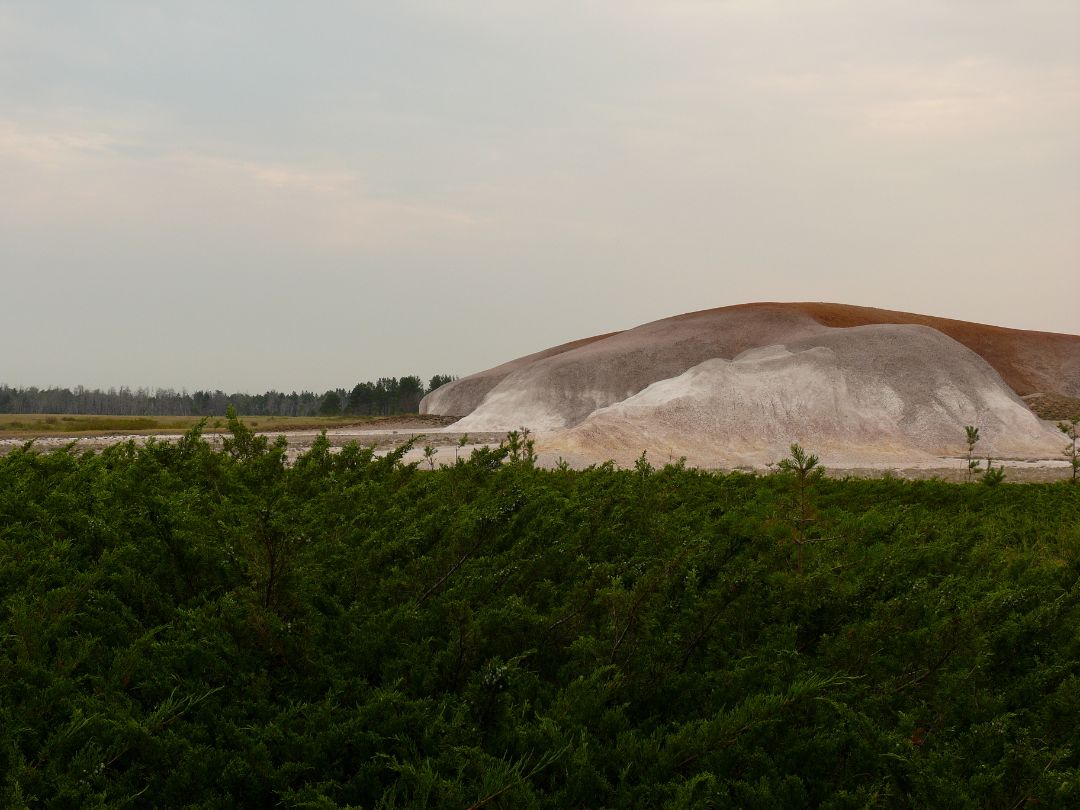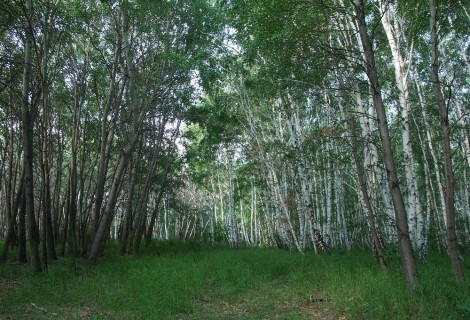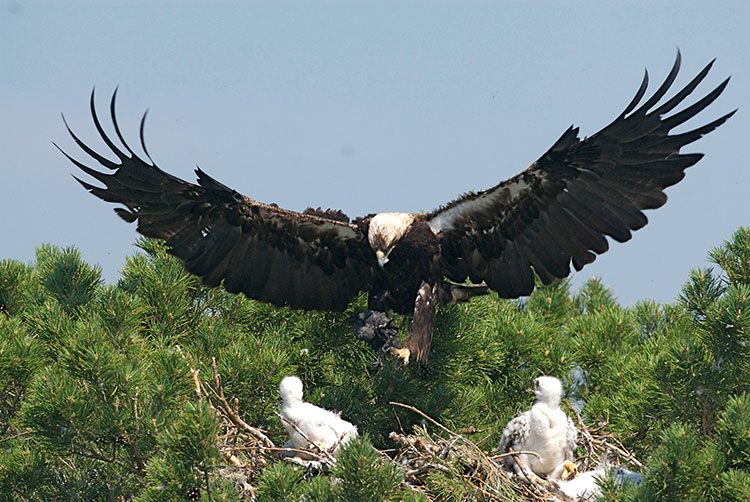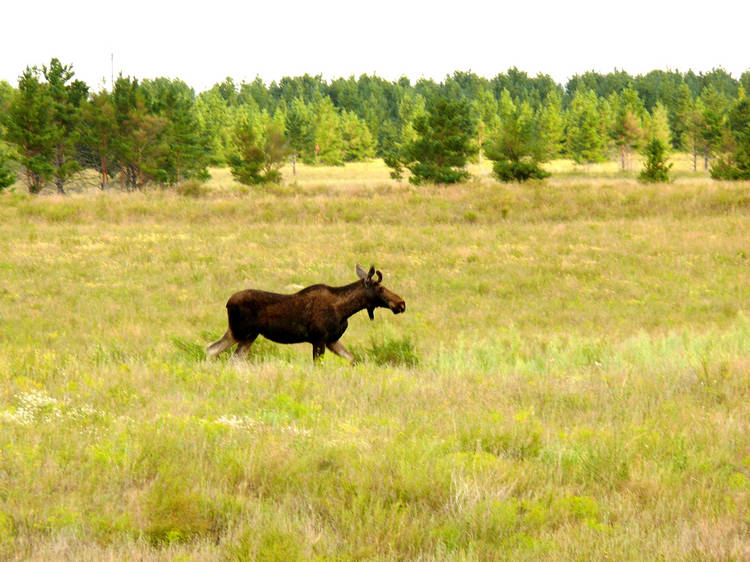The Naurzum national nature reserve is a protected area in northern Kazakhstan in the Kostanai Region. It covers an area of around 191,000 hectares and was established in 1931 to protect the region’s unique flora and fauna. It was one of the very first reserves in Eurasia to be included in the United Nations Educational, Scientific and Cultural Organization (UNESCO) World Heritage List in 2008.
Distinctive features
This area’s uniqueness lies in the combination of four types of landscape: forest, steppe, wetlands, and semi-desert. Despite this geographical contrast, all four zones are located next to each other.

The Naurzum pine forest. Photo credit: naurzum.kz.
“The nature of the reserve is rich in picturesque landscapes and peculiar flora, which includes a mixture of northern and southern forms. It combines untouched areas of the steppe, the miraculous green pine forests, aspen, and birch groves, as well as remnants of multi-colored clays, dunes, and steppe lakes,” said Mariya Zeynelova, a researcher of the reserve, in an interview with Kazinform news agency.
The reserve consists of three sections: Naurzum, Tersek and Sypsyn. Pine forests are the main attraction of the Naurzum and Tersek areas. The Naurzum pine forest, which covers 16 hectares, is located mainly on the dunes in the center of the Turgai Hollow. The area is home to long-lived pine trees, many of which are 220 years old.
The Tersek ribbon pine forest, over 20 kilometers long, is located in the reserve’s northwest. Reed grows on the Turan Sea’s sandy bottom, which is a rarity. These thickets, which usually grow in shallow lakes and swamps, began to multiply in the sands from the layering of roots. One can also find clay remains in the Tersek area.
The Sypsynagash forest is located to the west of the Naurzum pine forest. These are predominantly birch groves and occasionally aspen.
One of the longest rivers in the area is Naurzum-Karasu and Dana-Bike. It also contains smaller ones, including Akkansai and Moiyn. The largest lakes are Aksuat and Sarymoyin. The former is a whole system of small freshwater lakes, while Sarymoyin is salty. It also forms a system of small lakes.
Climate and best time to visit
The climate is sharply continental, characterized by low winter and high summer temperatures. The average temperature ranges from 24 to 40 degrees Celsius during the summer.

The Sypsynagash forest. Photo credit: visitkostanay.kz
Tourists often visit the Naurzum reserve in the spring during the bloom of a rare Schrenk tulip, listed in the Red Book of Endangered Species. During this period, the fields are covered with multi-colored flower carpets. The Schrenk tulip is considered the ancestor of the first varieties of this plant species and is of great value to nature.
Routes
A modern visitor center was built in the reserve in 2012, offering a film presentation about the reserve’s history, and an opportunity to experience the diversity of the flora and fauna, and the main features of the area.

Imperial eagle with its offspring. Photo credit: naurzum.kz.
The reserve offers six ecological routes, which are equipped with gazebos, information panels, and pavilions, allowing a visitor to get acquainted with the reserve’s ecosystems without harming the wildlife.
“The nature of the reserve has remained pristine and intact. One of the routes entails a birch-aspen forest, a willow garden, and a spring with delicious [drinking] water,” Zeynelova said.
Another route starts from a sacred place – Saint Turkebay Ata’s grave. Residents say he lived at the beginning of the 19th century and became a famous healer. Anyone who comes to the grave, regardless of religion, can ask him for help.
Fauna
Nearly 318 species of birds, 44 species of mammals, and 11 species of fish inhabit this area. The rich flora and fauna of the reserve serve as a place for the conservation and study of its biodiversity and is also an excellent vacation spot for nature lovers.

Elk one of the inhabitants in the Naurzum reserve. Photo credit: naurzum.kz.
The reserve is home to 155 nesting birds and 127 migratory or wintering species, including 40 from the Red Book of Endangered Species. It is also a unique place in terms of the abundance of birds of prey. Four eagle species can be found here – the golden eagle, the imperial eagle, the white-tailed eagle, and the steppe eagle.
The most extensive waterfowl migration route on the entire continent runs through the reserve. They remain for nesting in the summer. The waterfowl population is highly dependent on the hydrological regime of the lakes – fluctuations in water levels. When the levels are high, reservoirs act as nesting and molting sites for many ducks.
Among 44 species of mammals registered in the reserve, 42 species live here on a permanent basis, including elk, Siberian roe deer, lynx, common squirrel, common hedgehog, blue hare, badger, ermine, weasel, pine marten, raccoon dog, and Aral fat-tailed jerboa.
Useful information
The reserve can only be visited after a ten-day notice to limit the burden on the ecological trails. It can welcome 1,000 people per season.
The entrance fee to the reserve is approximately 745 tenge ($1.5) per person.
Tourists can arrange a one-day tour or stay overnight, as guest houses offer comfortable accommodation that costs between 1,500 tenge ($3) and 15,000 tenge ($33) per night.
The most convenient way to get to the reserve is by car, taxi, or a shuttle bus from the city of Kostanai, which is 190 kilometers away.
Soure: The Astana Times


